Croatia: land of scarred beauty
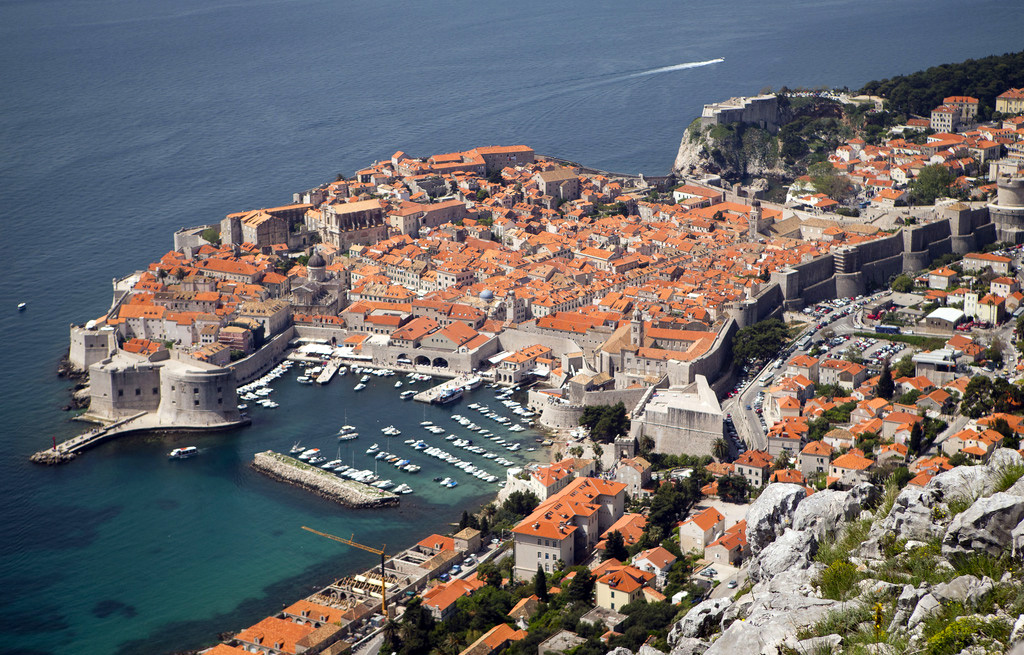
Croatia enters the European Union on July 1 – a land of breathtaking scenery, rich cultural heritage and wounds that have not yet healed 20 years after the end of the Balkan war. swissinfo.ch travelled 1,000 kilometres across the country, taking in the splendours of Dubrovnik and the scars of Vukovar.
Situated between the green and turquoise waters of the Dalmatian coast, at the tip of a rocky promontory jutting into the sea, the Pearl of the Adriatic certainly deserves its name.
“If you want to see heaven on earth, come to Dubrovnik”, wrote George Bernard Shaw in 1929.
This is a heaven carved in stone, quarried, worked, and assembled by man over the centuries. The plain façades of churches and palaces are built of massive stone blocks, and embellished with tracery and gothic and baroque statues. And in every street, paving-stones smoothed by 1,400 years of walking, on which modern shoes are apt to slip treacherously.
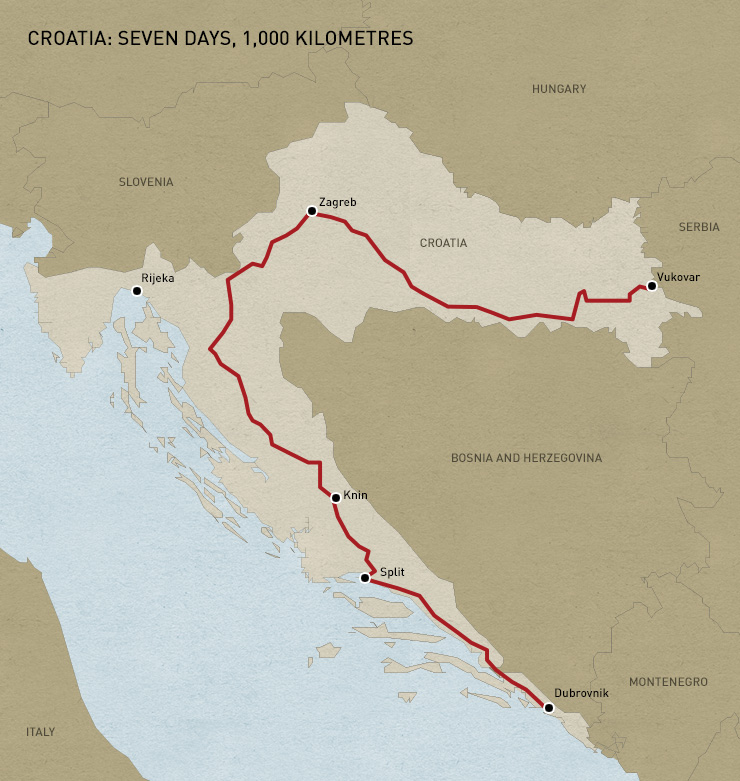
More
A trip through Croatia
Ragusa, 1,000-year-old republic
“Liberty is not to be sold for all the gold in the world,” proclaims the motto of Ragusa, as Dubrovnik was named when it was founded just 120 years after the fall of Rome. To preserve their liberty, the citizens built the most formidable system of fortifications still visible in the Mediterranean today. The old city is built foursquare, 400 metres by 400 metres, using thousands of tons of stone.
It was an impregnable fortress in its day. Of all the city-states of Europe, Ragusa was the one that lasted the longest – even longer than Venice, its great rival. It repulsed all would-be invaders until it was occupied first by Napoleon, then by the Austrians. Today the city is a UNESCO world heritage site.
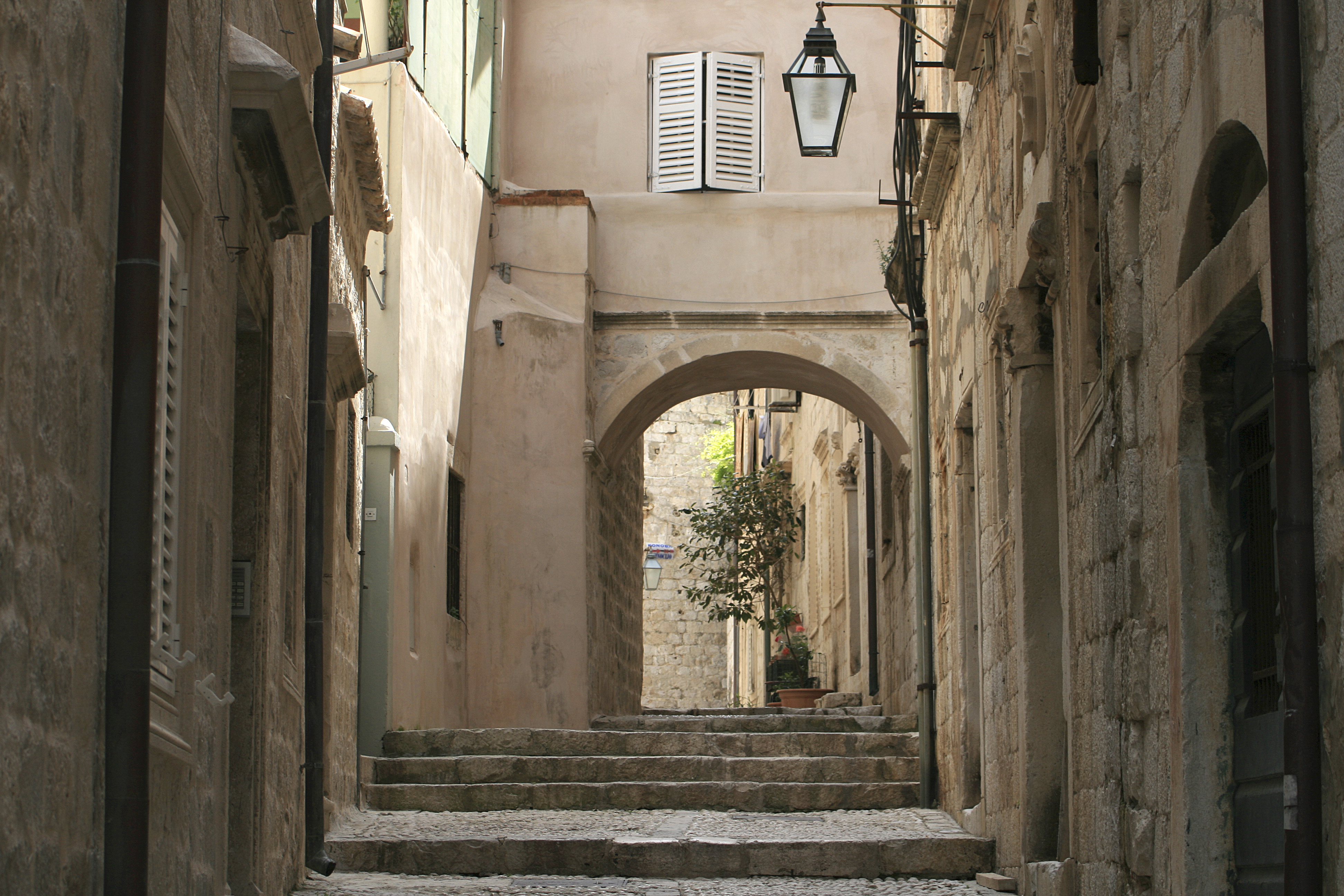
“Without tourism, we are nothing,” says Pero, who rents out cars at the airport. “In winter there are only three flights a day, all domestic, but in summer there can be 50 to 60 from all over Europe.”
To all these visitors, who in summer can make downtown as crowded as a commuter platform in rush-hour, Ragusa-Dubrovnik reveals more than its architectural splendours. The city does not want the world to forget what it suffered. Down through the centuries, to be sure – but that is history. What is still fresh in people’s memories is the savagery of the war of independence, which from 1991 to 1995 pitted Croatia against what was left of Yugoslavia.
At the very first stop on the tour of the walls, the audio guide recalls “the barbarous Serbian and Montenegrin aggression”. It returns to the topic several times. At all the entry-points to the city there is a detailed map showing every shell crater, every fire, every collapsed roof, not forgetting the 114 martyrs, whose portraits are featured in a gallery – and memorials, wreaths, candles, posters, and exhibits.
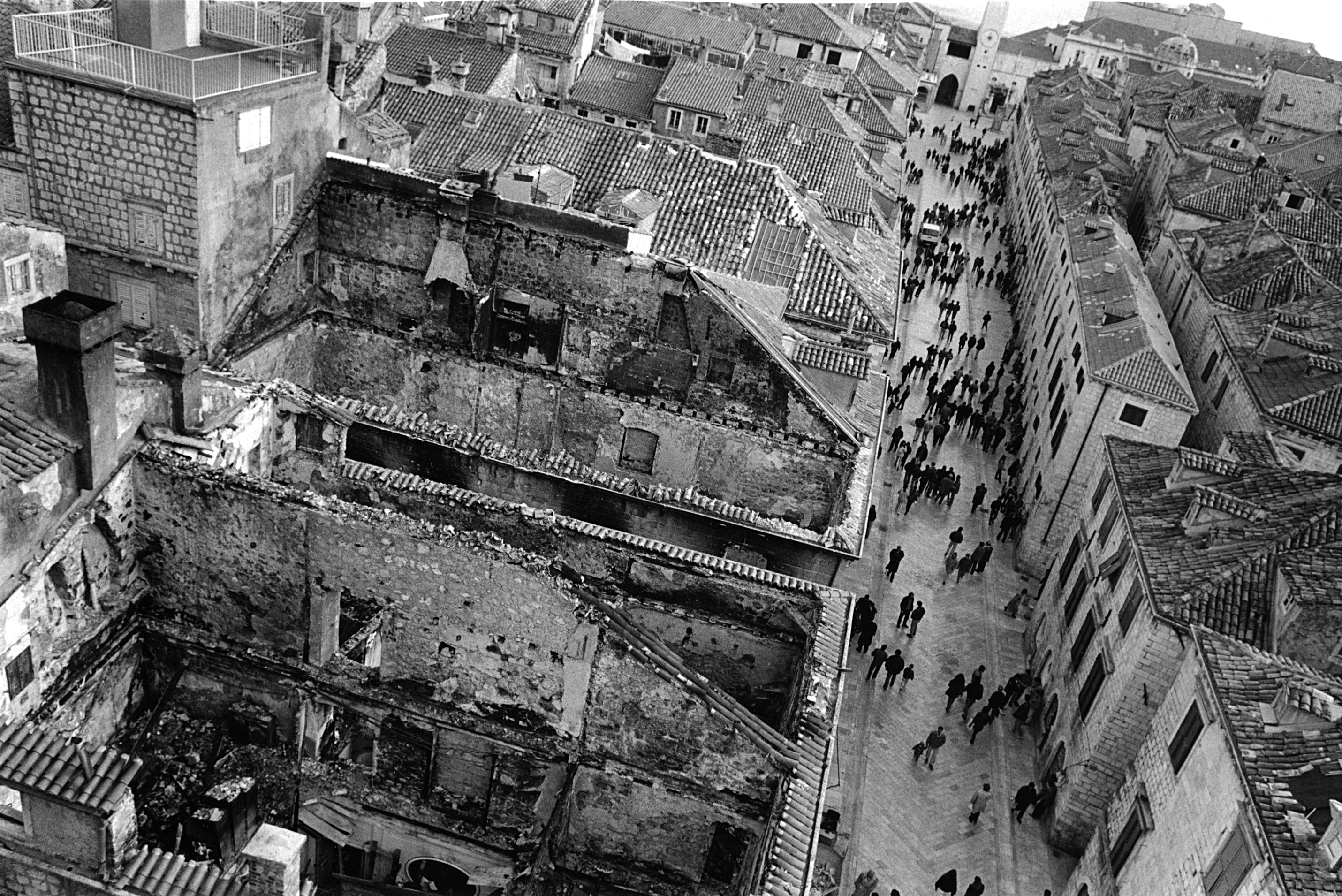
Unspoiled beauty
Driving up from Dubrovnik, in the extreme south-east of the country, the beauty of the coastline with its 1,165 islands leaves you at a loss for words. The countryside has not been disfigured by hotel monstrosities like the ones that Russian investors have inflicted on neighbouring Montenegro. Here the tourist gets to stay with the locals, and you see signs for “Apartments” and “Sobe” (rooms) everywhere.
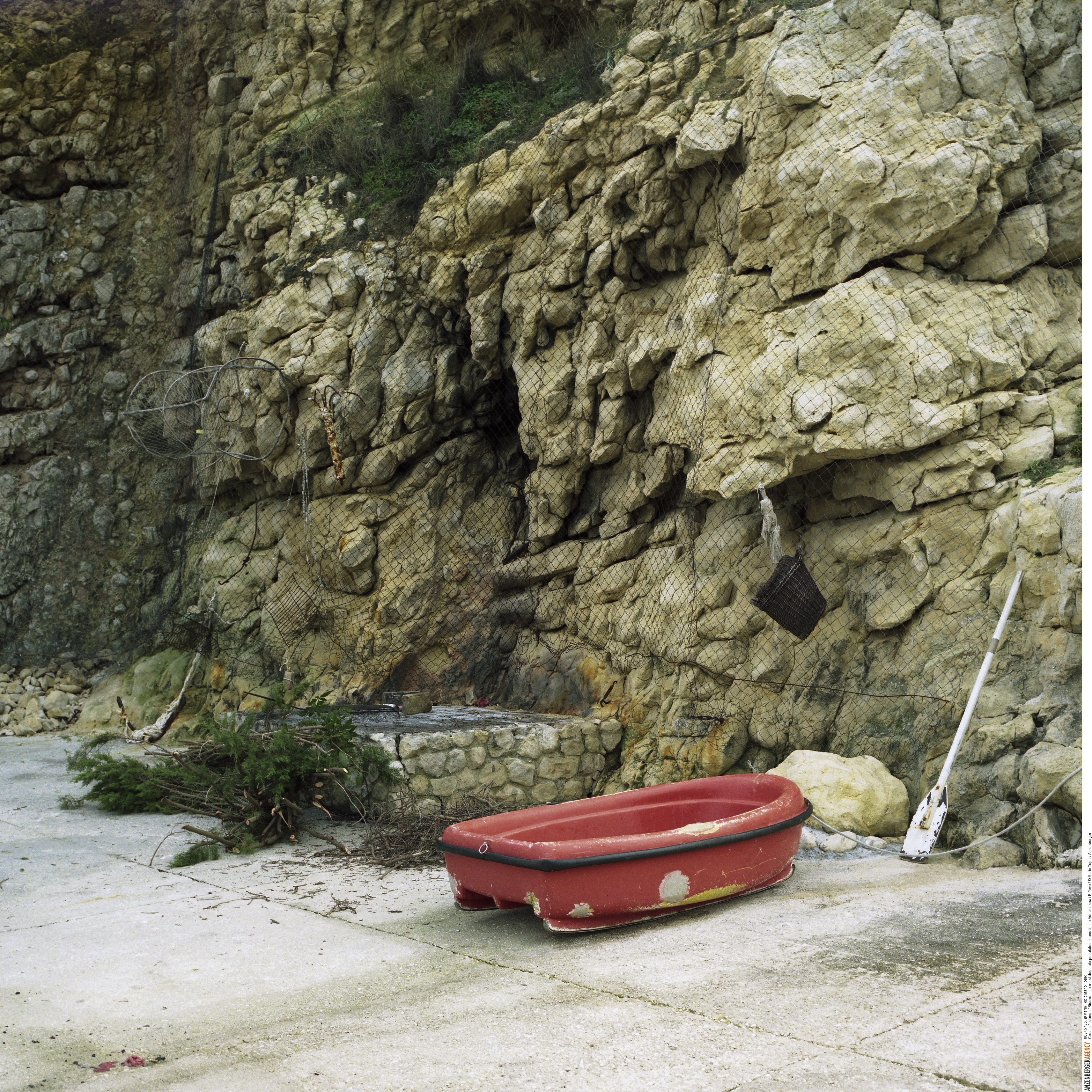
More
Biševo – untouched, unspoiled and far from Europe
“We are lucky enough not to have any money here,” is the wry comment of Zeljko, an engineer who has worked on Swiss cooperative projects. More diplomatically, the Swiss ambassador in Zagreb, Denis Knobel, notes that “the war has held back the development of tourism”.
Pero, the rental car man, just hopes that entry into the EU will bring investment, which will mean jobs, and maybe better rates of pay. At present, he makes 700 euros (CHF860) a month.
Investors will have to take local environmental concerns into account. On the last weekend in April a referendum was held against a golf course and luxury housing project worth a billion euros near Dubrovnik. “This was a rare event for the Balkans, and it came after a determined resistance,” notes ambassador Knobel. Yet only 31.5 per cent of the citizens actually cast a vote, while the law requires a turn-out of at least 50 per cent. So the Israeli promoters can go ahead with their “ghetto for millionnaires”, as Zeljko puts it, after all.
Knin, twice a capital
Once the traveller leaves the coast to venture inland, the countryside is completely unspoiled. There are great stretches of stony waste with patches of bright green vegetation, and every so often huge boulders. The villages are further and further apart, and after a while consist merely of groups of two or three houses, often abandoned, indicated kilometres in advance by yellow sign posts, unexpected indications of human presence in the middle of nowhere. The railway line stretches endlessly into the distance.
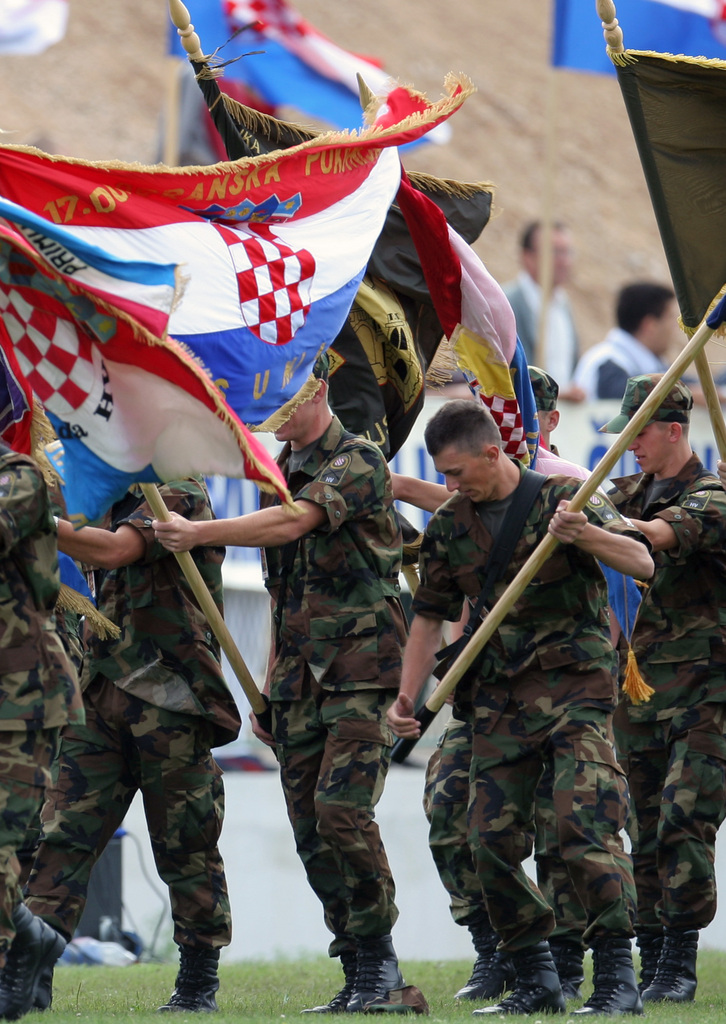
At the foot of the mountains on the road to Bosnia, the town of Knin lies in the shadow of the fortress that has crowned the hill above for at least a thousand years. Before the war, the majority living here were Serbs. Knin, once the capital of the Kingdom of Croatia, was the capital of the short-lived Serbian Republic of Krajina. The Serbs who fled when the Croatians recovered it did not all come back, and they have been replaced by Bosnian Croats.
Everywhere – in Croatia, in Bosnia, in Kosovo – the story has been the same: the war drove out inhabitants belonging to both sides, and when the guns fell silent and the border was redrawn, many did not cross back to live with yesterday’s enemy. In such circumstances it is not easy to reallocate housing.
In the town, the mood is rather gloomy. Marija, the young waitress in the cafe which looks out over the street leading to the railway station where roadworks are going on, has only one word to say when asked what she expects from the EU: “Nothing!” What about investment? “We know whose pockets the money will end up in.” Does she know that only two blocks from her café, an elegant orange building surrounded by half-ruined houses was rebuilt with Swiss money?
The SDC, the Swiss Agency for Development and Cooperation, has spent CHF24 million in this area since the war, rebuilding houses, digging irrigation ditches, supporting farming cooperatives and buying ambulances. But Zeljko, who now has a consulting office in Zagreb with his friend Igor, a chemist specialising in additives for cement, wonders if the priorities are right. “They should have rebuilt the factories first. After all, people already had housing. It would have been better to give them jobs before putting a new roof over their heads.” Here, there doesn’t seem to be much of a future to look forward to.
In spite of all that, Knin is the Croatian city with the most young people and children. “It stands to reason – people are out of work, and with four children you can live on the child allowance,” Igor explains. There are children playing football under the arch of the memorial to the martyrs of independence, the only gleaming monument in the midst of all the greyness.
Ante Gotovina – Heroj!
Croatia has not forgotten its general, Ante Gotovina. It is impossible to overlook his picture, at roadsides, on walls, even on the mugs that Lana sells in her souvenir shop in Zagreb. For her, it is very simple: “He freed the country. He’s a hero.”
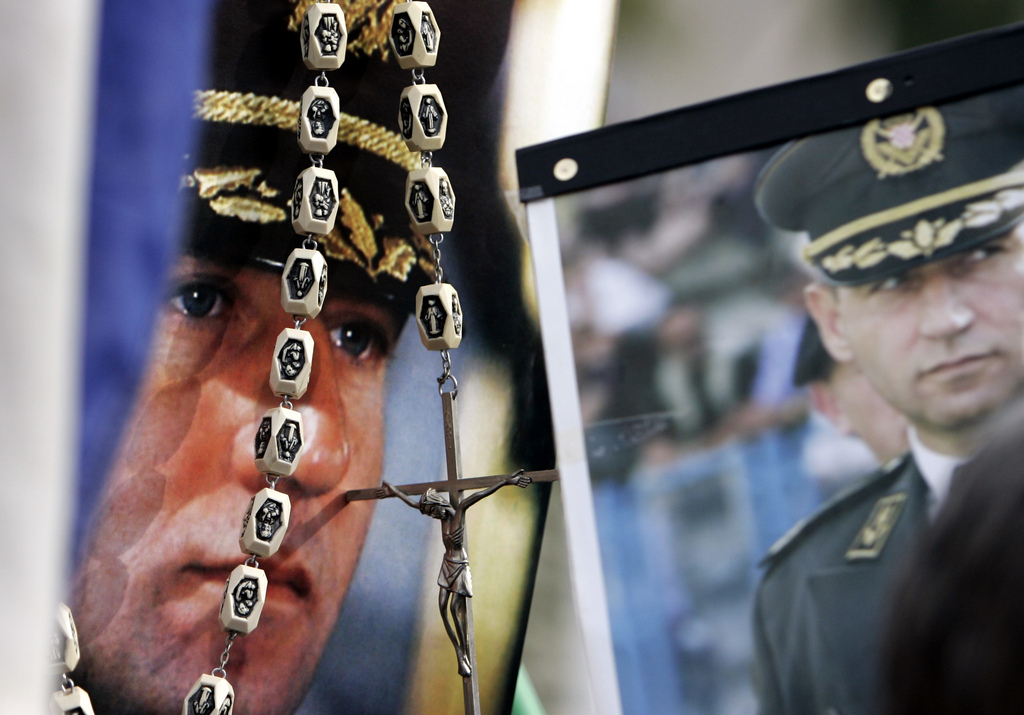
His life reads like the plot of an action movie. The Courrier des Balkans summed up his career thus: “Foreign Legion veteran, former bodyguard linked to the extreme right in France, trainer of paramilitaries in Latin America, Ante Gotovina has a long criminal record: holdups, hostage-takings, extortion. He was convicted of these offences by the French courts.”
Beginning in 1991, Gotovina rose through the ranks in the new Croatian army. In 1995, the military operation to retake Krajina, codenamed “Storm”, made him a hero. But there is no such thing as a clean war.
In April 2011, the International Criminal Tribunal for the Former Yugoslavia (ICTY) sentenced him to 24 years in prison for war crimes. Then in November 2012, the same court, sitting in appeal, acquitted him of all charges. People in Serbia were speechless with indignation, even the anti-nationalists.
Carla del Ponte, the former prosecutor at the Tribunal, thinks that its credibility has been undermined. It is true that, up to this point, it has hardly sentenced anyone but Serbs.
But it may not be the end of the affair. At the beginning of June, the Danish press published a letter written by an ICTY judge, expressing “disappointment” at the acquittals. Prosecutor Serge Brammertz has admitted “serious errors”, and has undertaken to reopen some of the dossiers. Among others he is considering requesting a review of the Gotovina case.
“The work of the international court is still underway. Historians will also have to be the judge,” says Knobel. But doesn’t this excessive nationalism worry the diplomat? “Just looking around, you would think you are in Europe. But don’t forget that what takes longest to change is mentalities.”
Vukovar, the tormented city
From the coast, there’s another road that crosses the low Dinaric Alps and runs down into the broad Slavonian plain. The woodlands look as if they could be in France, and the one-street villages stretch for kilometres along the straight road – the typical scenery of flat lands.
At the end of this road is the port city of Vukovar on the Danube, which now marks the frontier with Serbia. In summer 1991, four years before Srebrenica, Vukovar went through the worst atrocities committed on European soil since the Second World War. Three months of siege with the defenders outnumbered 20 to one; 1,100 deaths on the Serbian side and 5,000 on the Croatian side; and brutal ethnic cleansing, with refugees taking to the roads in their tens of thousands, and the baroque splendors of a once multicultural city reduced to a heap of ruins.
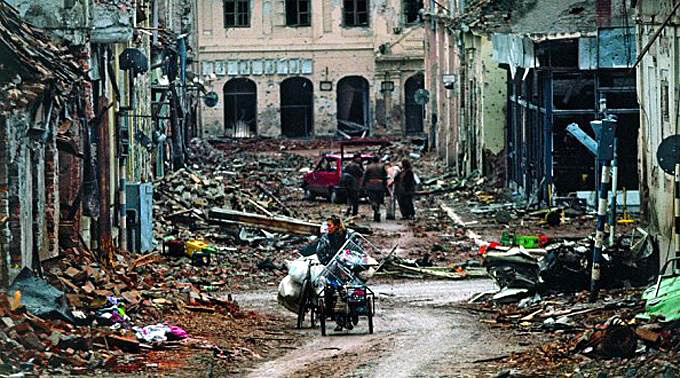
Today, it is obvious that reconstruction funds have been flowing abundantly. The monuments look brand new, but the coloured façades are not able to hide the scars of war. The ferry that used to link the two sides of the Danube has run again on only one occasion, in November 2010, for the president of Serbia Boris Tadic, when he came to present his country’s apologies for the crimes committed 20 years before.
Early this year, tens of thousands of Croats demonstrated in Vukovar and Zagreb against the reintroduction of the Cyrillic alphabet on street signs. The fact is that nearly 35 per cent of the population of the city is still Serb, and bilingualism is the law if a minority exceeds 33 per cent. A coalition of former fighters and rightwing parties has called for a moratorium of 30 to 50 years on bilingual signs and, on April 29, Cardinal Archbishop of Zagreb Josip Bozanic added his support. “Vukovar deserves special sensitivity, which should be expressed in special regulations on some sensitive subjects,” said the Catholic prelate.
In the meantime, the monument that Vukovar put up “to the fallen of free Croatia” is indeed bilingual. But the second inscription is not in Cyrillic but in Glagolitic, the script of the Slavic language which the Croat clergy of the Middle Ages used instead of Latin by special dispensation from the Vatican.
Economy in ruins
Around Vukovar, the scars are still very visible: farmhouses and factories in ruins, fields untilled, ghost towns. The standard of living in Slavonia, which used to be the bread-basket of Yugoslavia, is now below the Croatian average. “It’s a real mess,” sighs Zeljko. “Slavonia is nearly dead, the farmers are aging, the young are leaving, although we could produce here enough to feed the country five times over. But there are powerful import-export lobbies, which buy up the local produce and sell it at high prices in the EU.”
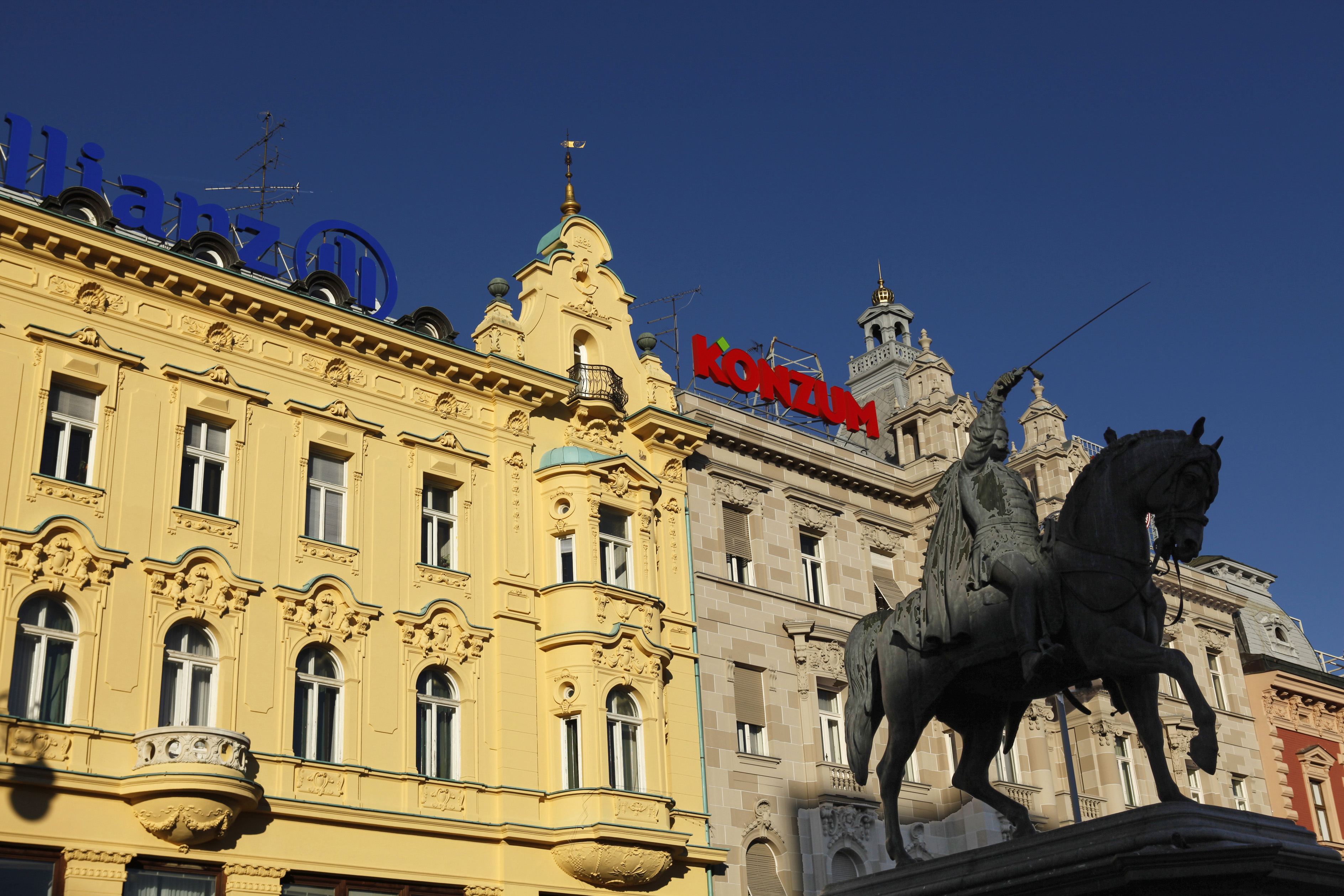
What about the coming accession? “We are going to lose even more,” he replies. He voted against in 2012. “The EU is blackmailing us. Look at the Hungarians, they have become like slaves. And Bulgaria: they used to produce excellent fruit and now they have to import them.”
Less pessimistic, ambassador Knobel notes that the Croatian economy, which at independence lost the internal Yugoslavian market, “remains vulnerable to shocks from outside. The country has adopted structural reform measures and should quickly increase its competitiveness. The government is expecting an upswing in 2014 thanks among other things to cohesion funds from the EU, [to which Switzerland will also be contributing]”.
Zagreb is the place where I have arranged to meet up again with Mario, a Vukovar veteran – after many, many years.
Flashback to 1974. Then there was a country called Yugoslavia, and Mario was the first to make me see the powderkeg under the veneer of federalism in the Balkans. He was 23, I was 15.
He had come to work in a quarry in the Rhône valley, and he rented a room from my parents. He was just out of law school, he spoke French, English, Italian and Russian, and he came to break rocks in Switzerland.
He taught us about ping-pong and the Rolling Stones. But when he talked about his home country, his steely blue eyes flashed fire. There was no joking about this. Through long evenings he gave us a refresher course in history and geography – the Croatian nationalist version, of course. Because he was a Croat, he said, not a Yugoslav! He was proud of what he was, and he was ready to take up arms for his country.
Those were not empty words either. In 1991, when Croatia declared its independence, he joined an armoured division. He would rise to the rank of colonel in the course of a war he never wanted to tell me about.
This evening, he is waiting for me on the second floor of the imposing mid-19th century house where he was born, just beside Zagreb’s main park. At the end of a long hallway of closed doors, his wife takes me to his office, wide with high ceilings but sombre, like it is all through their 150 square metre apartment where time seems to have stood still.
How he has changed! It’s more than what the passage of years does to all of us. “My head can’t hold all these languages,” he exclaims, excusing the deterioration of his French. Could your head hold all those horrors, old friend? I wonder. One always says “I understand”, but what does anyone know about war who has never been through one? “Why did we have this war?” he asks, looking into the distance. “A thousand years ago, we had a king. Today we have a country. Now what?” An incomplete country, too: “Bosnia belongs to us”, he says – Bosnia, looking on the map like a big nut held in the nutcracker that is the new Croatia.
He won’t talk about Vukovar. Gotovina? He knows him personally. Going back five generations, they actually have a common ancestor. He was his commanding officer. He is a hero of course. “He wasn’t there when the atrocities happened, he was in Bosnia then. Remember Srebrenica? At Bihac, he saved the city surrounded by the Serbs. If he hadn’t been there, there would have been 30,000 dead, not 7,000.” Europe? He voted no. “You in Switzerland are right to stay out.” What about the future? Of his two sons, one teaches at the university and the other is an engineer, but they are not well off and do not have any children yet.
And while he grumbles about the young hollering their Saturday night fever out in the street, Mario, his hand shaking, finishes a large bottle of cheap beer.
“You see, I’m reduced to drinking Serbian beer”, he exclaims with a wry smile, which turns into a deep and rather hollow laugh when he hears a shower of rain suddenly hitting the pavement. “It’s spring!”
“But investment with the profits going out of the country – how will that help us?” Zeljko asks bluntly. He also thinks the opening of borders will make the most qualified Croatians leave. He himself does not expect to emigrate, no more than his friend Igor. “We’re not optimistic, but we’re working,” say the two men.
This sentiment seems widely shared. Whether it was Nevenka, Zdravko, Ana, Roman, Bojka or Branko – in seven days I did not meet a waitress, student, shopkeeper or receptionist dreaming of an eldorado in Europe or Switzerland. The young, who declare themselves eurosceptic or outright hostile to the EU, are Croats first and foremost. And they made it plain that Croats love their country.
Zagreb, city of culture
It is not just their country they love, but their capital city as well. Around the cathedral, full of kneeling worshippers at mass time, the winding streets and the low houses are still those of a medieval town. At the foot of its hill, Zagreb looks like Strauss’ Vienna, with a preference for yellow façades, and endless parks full of dogs running around happily.
From the window of my hotel at twilight, I can see the wide bay window of a dance studio. A troupe of young women are rehearsing a jazz ballet – very professional, very punchy. For Zagreb is also a city of the arts. It is full of theatres, concert halls, museums, galleries and music schools, and Croatian President Ivo Josipovic is a well-known classical composer. Street musicians favour local music, but can also do Charlie Parker or Dire Straits star Mark Knopfler – the evening I fly out, Knopfler is playing the Zagreb Arena.
Roman heritage
And then there’s one major source of shared pride – football. Now fourth in the FIFA world rankings, the Croatian national team with its red-and-white chequered shirts is far and away the best team that has come out of the former Yugoslavia. Its stars play for Real Madrid, Olympique Lyonnais and Bayern Munich.
“Football is the only good thing in this country,” Igor and Zeljko told me the night before. Really? Their football is excellent, to be sure, but Croatia has more than that to boast of, when you look around.
The country that gave the world the cravat (its very name derives from the word “Croat”) has clean streets, capuccino mousse and creamy Italian-style ice cream, energy-saving lightbulbs and free WiFi practically everywhere, huge wind farms, meltingly tender beef steaks that would be the envy of a Paris chef, drivers who turn off their cars at red lights, and people who are friendly, discreet and highly educated, as they always are in former communist countries.
At Split, another pearl of the Dalmatian coast, the heart of the old city takes the shape of the palace which the Roman emperor Diocletian, a native of this country, built himself in the early fourth century for his old age. Rome, the first European Union, gave Europe 500 years of peace. Today, not even 15 years have passed since the last flare-up on the continent. But Europe is on the march. And whether it likes it or not, Croatia is part of Europe.
Economic relations. The volume of trade is fairly low, and fallling: in 2011 it stood at about CHF300 million. Switzerland exports mainly pharmaceuticals and machinery and imports machinery and wood-based products.
Cohesion funds. The Swiss government is to propose to parliament a contribution of CHF45 million, an amount proportional to that given to the 12 new member states that have joined the EU since 2004.
Immigration: About 40,000 Croats live in Switzerland, where most are well integrated. Over 1300 Swiss live in Croatia. Many of them are men with Croatian wives.
Major influx unlikely. According to ambassador Denis Knobel, “most experts do not expect any great waves of Croatian emigration after the accession”, even if there may be “a latent willingness in the population, especially among the young”. In Switzerland “the Croatian diaspora could play some role, but actually going in both directions, given that lately there have been more Croats leaving Switzerland than new immigrants.”
Caution still indicated
. A free movement agreement with Switzerland, which is not an EU member, does not follow automatically. It depends on the Switzerland-EU bilateral accords, which have to be adapted with each new member. The right-wing People’s Party and nationalist groups, who organised a referendum against the extension of the policy to Romania and Bulgaria – the extension was finally accepted by almost 60% of voters – are already threatening to do the same on Croatia.
(translated from French by Terence MacNamee)

In compliance with the JTI standards
More: SWI swissinfo.ch certified by the Journalism Trust Initiative
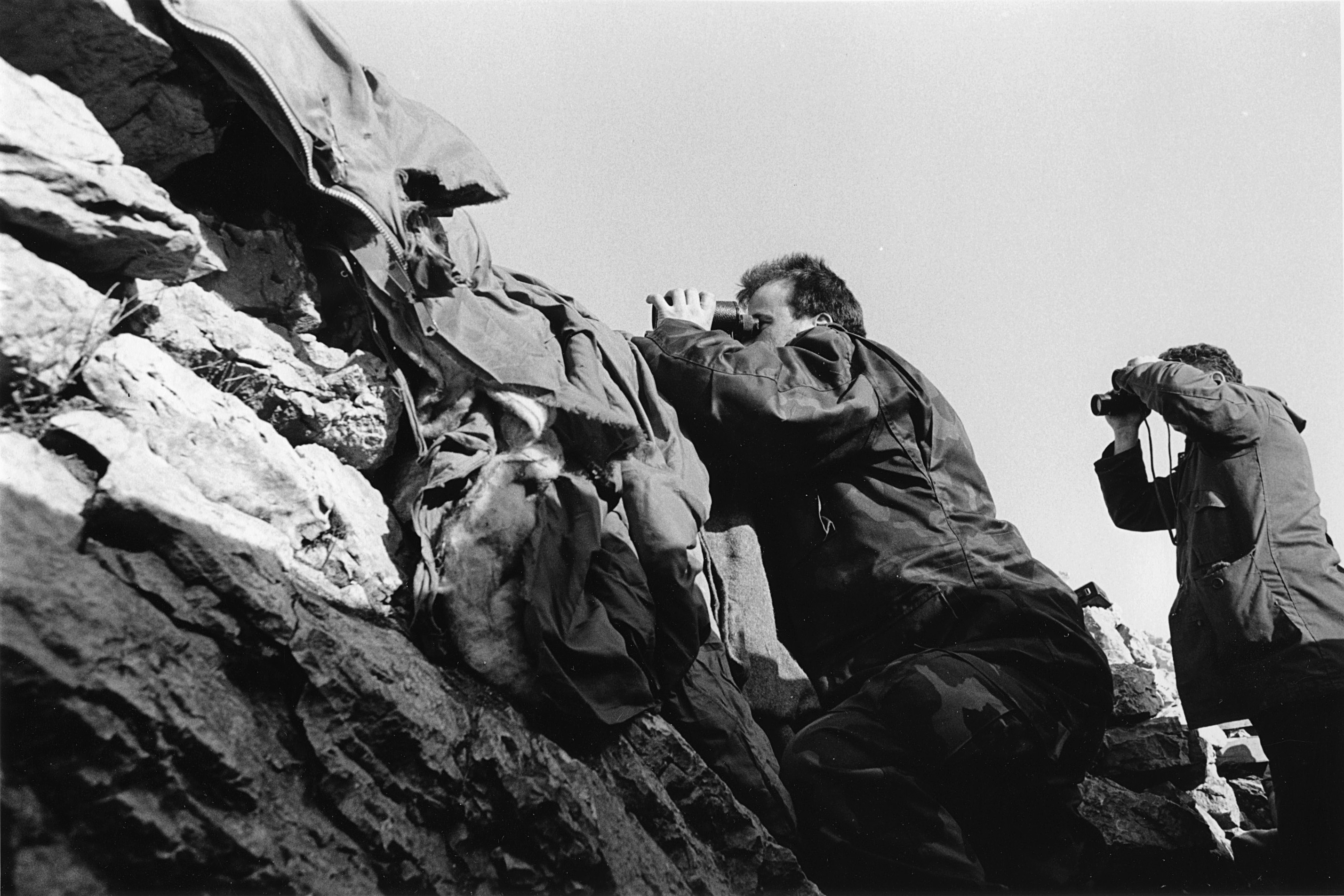
You can find an overview of ongoing debates with our journalists here . Please join us!
If you want to start a conversation about a topic raised in this article or want to report factual errors, email us at english@swissinfo.ch.